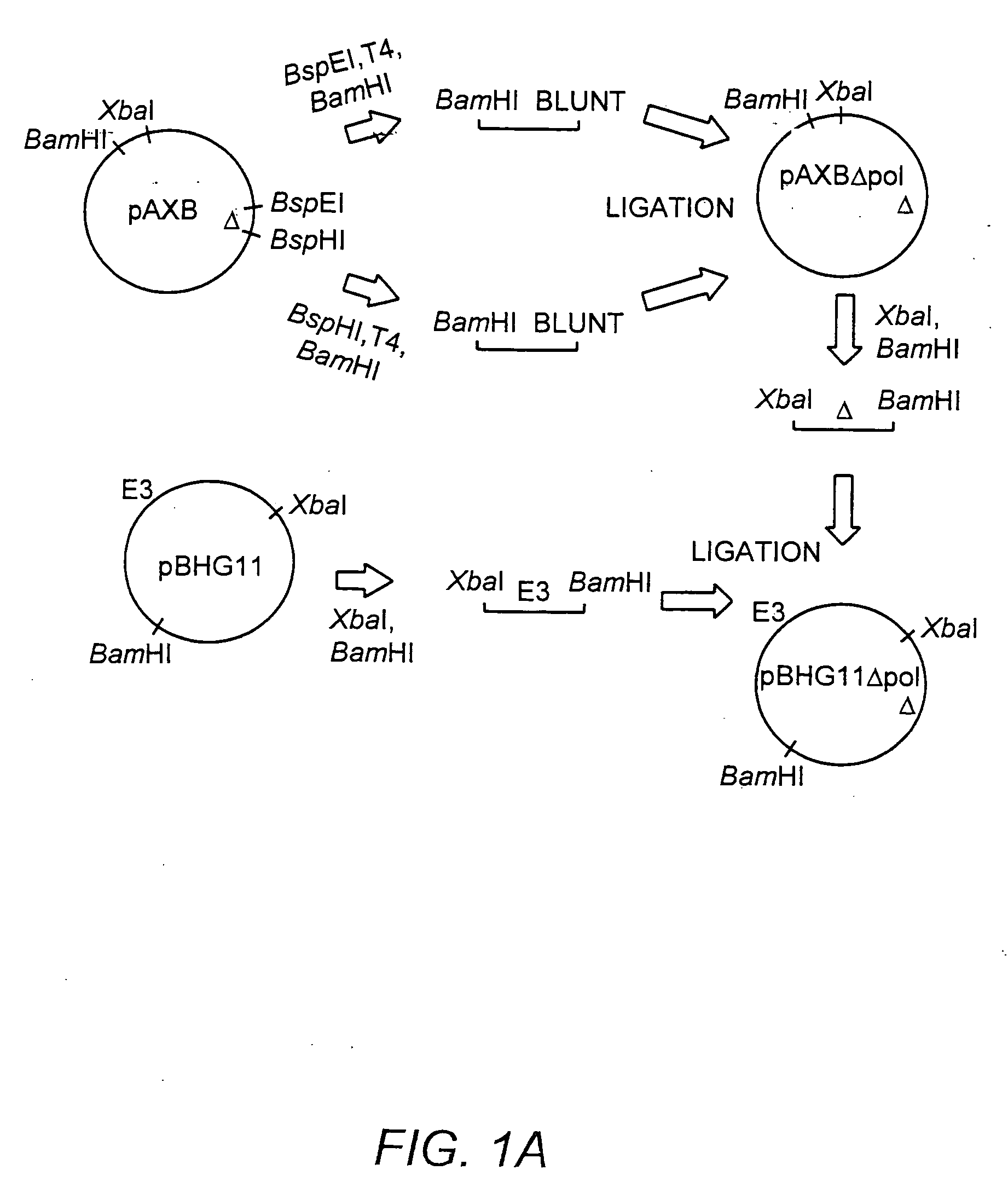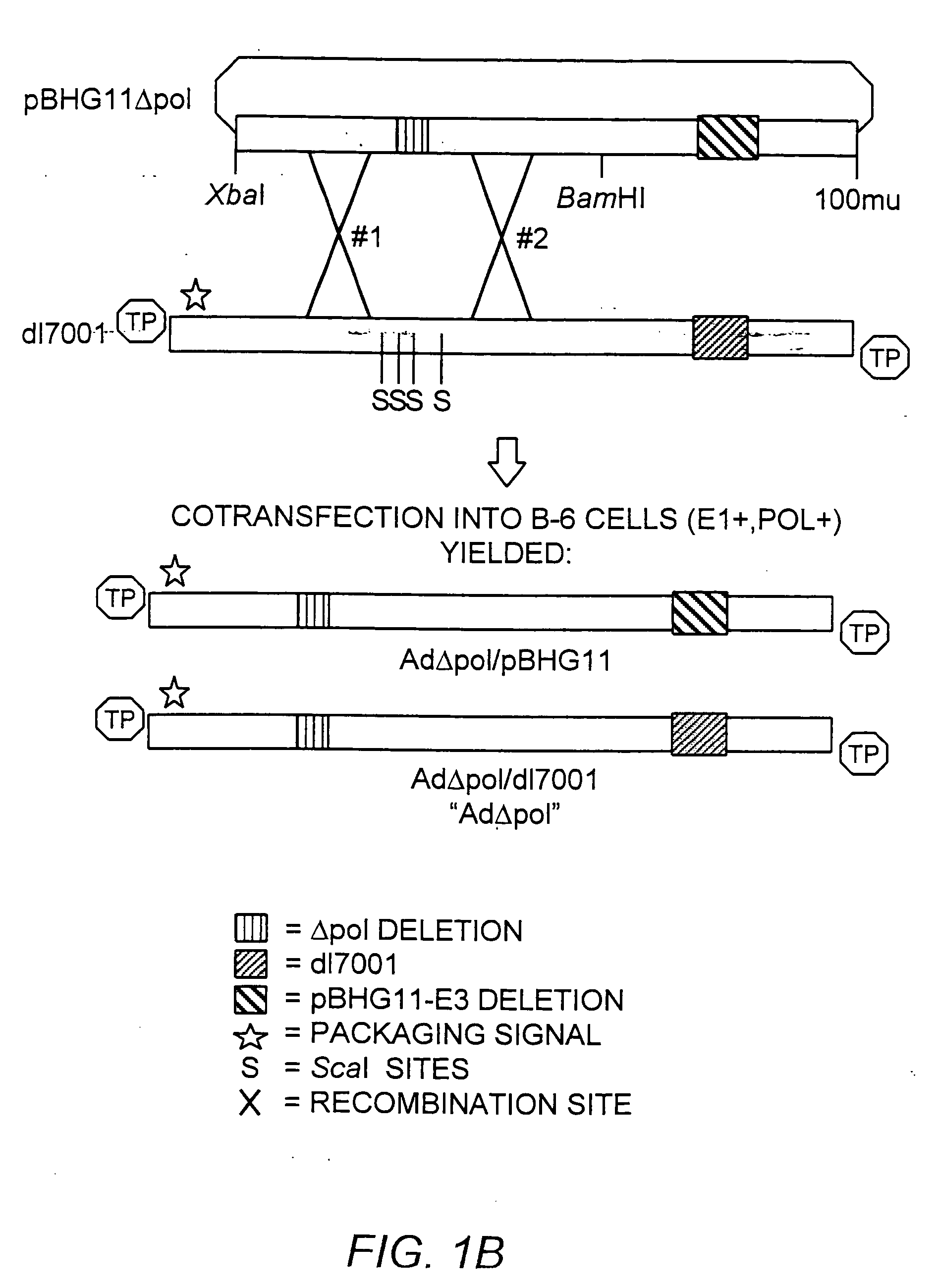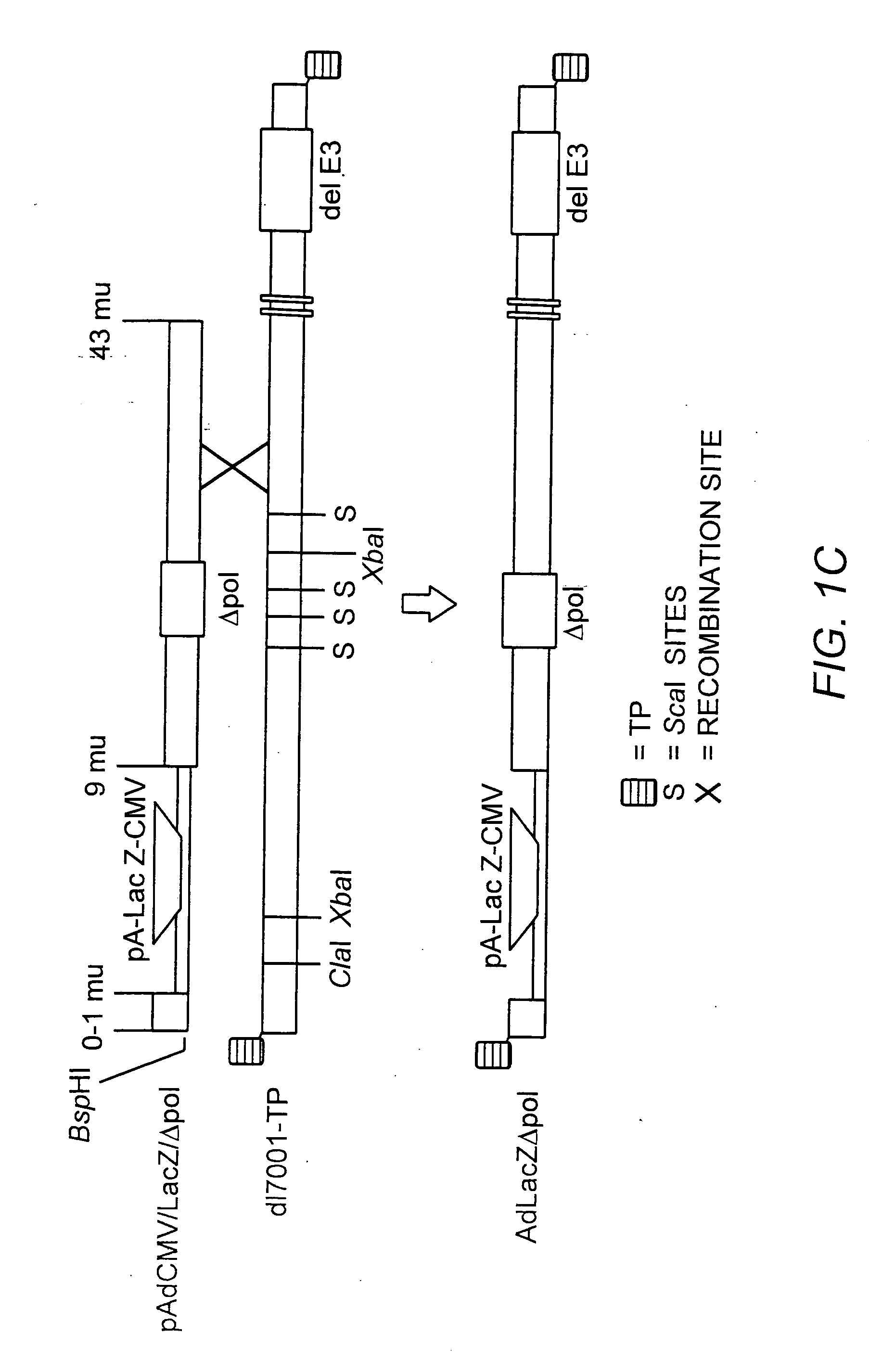Deleted adenovirus vectors and methods of making and administering the same
a technology of adenovirus and adenovirus, which is applied in the field of adenovirus vectors, can solve the problems of inability to transduce more than a few specific tissues of subjects, inability to use retroviruses to transduce more than a few specific tissues, and inability to carry out the implementation of existing viral vectors, etc., to achieve the effect of reducing the expression of viral protein, reducing the carrying capacity of heterologous nucleotid
- Summary
- Abstract
- Description
- Claims
- Application Information
AI Technical Summary
Benefits of technology
Problems solved by technology
Method used
Image
Examples
example 1
Construction of the Ad Vector Deleted for the E2b-Polymerase Gene
[0183] The ˜20 kb Xba-BamHI subfragment of pBHG11 (Microbix, Toronto) which contains the Ad E2b region was subcloned into pBluescriptKSII+ (Stratagene, La Jolla, Calif.), yielding pAXB. The pAXB plasmid was digested with BspEI, T4 DNA polymerase end-filled, BamHI digested, and the ˜9.0 kilobase pair (kb) fragment was isolated. Plasmid pAXB was also digested with BspHI, T4 DNA polymerase end-filled, BamHI digested, and the ˜13.7 kb fragment was ligated to the previously isolated 9.0 kb fragment, generating pAXB-Δpol. This subcloning strategy deleted 608 base pairs (Δpol: Ad5 nucleotide 7274-7881) within the amino terminus of the polymerase gene. This deletion also effectively removed ORF 9.4, present on the rightward reading strand in this region of the Ad genome. The Xba-BamHI subfragment of pAXB-Δpol was reintroduced into Xba-BamHI digested pBHG11, to generate pBHG11-Δpol (FIG. 1, Panel A).
[0184] Theoretically, pBHG...
example 2
Construction of [E1-, Δpol, E3-1 and [E1-, Δpol, ΔpTP, E3-] Ad Vectors
[0186] The AdΔpol virus was grown to high titer, and viral DNA isolated as previously described (Amalfitano, et al., (1996) PNAS USA 93:3352-56), digested with Ascl, T4 polymerase end-filled, and Bst11071 digested. The ˜9.3 kb blunt-ended Δpol containing fragment was subcloned into the Bst11071 digested shuttle plasmid pAdAscL. This subcloning strategy yielded pAdAscL-Δpol, a new shuttling plasmid specifically designed for the rapid isolation of recombinant Ad vectors deleted for both the Ad E1 and polymerase genes. The pAdAscL-Δpol plasmid contained nucleotides 1-15,671 of the left end of the Ad5 genome, but was effectively deleted for the E1 genes (Ad nt 358-3328, replaced by the AscI site) and also was deleted for the 608 bp Δpol deletion. A nuclear-targeted bacterial α-galactosidase transgene (LacZ) flanked by a minimal cytomegalovirus (CMV) promoter / enhancer element, the MINX intron (Niwa, M., et al., Genes ...
example 3
AdΔpol, AdLacZΔpol and AdLacZΔpp Vector Genome-Replication Studies
[0189] The respective cell lines were infected at the multiplicity of infection (MOI) indicated in FIGS. 2 and 3 with either AdΔpol, Adsub360LacZ (E1 deletion alone), AdLacZΔpol (E1 deletion+polymerase deletion) or AdLacZΔpp (E1 deletion, polymerase deletion, and pTP gene deletion), and incubated at 37.0° C. for the indicated times. Infected cells were then harvested and DNA prepared and analyzed as previously described (Amalfitano, et al., (1996) PNAS USA 93:3352-56). The results in FIGS. 2 and 3 show that even in the presence of high levels of E1 activity the Δpol modification conveys upon the vector a severe replication blockade. This block is significantly greater than that displayed by the first-generation Adsub360LacZ vector (FIG. 3). FIGS. 2 and 3 also show, in contrast to the reports using so-called “gutted” vectors which are essentially undetectable by 12-24 hours post infection, the input genomes persist to...
PUM
| Property | Measurement | Unit |
|---|---|---|
| pH | aaaaa | aaaaa |
| temperature | aaaaa | aaaaa |
| temperature | aaaaa | aaaaa |
Abstract
Description
Claims
Application Information
 Login to View More
Login to View More - R&D
- Intellectual Property
- Life Sciences
- Materials
- Tech Scout
- Unparalleled Data Quality
- Higher Quality Content
- 60% Fewer Hallucinations
Browse by: Latest US Patents, China's latest patents, Technical Efficacy Thesaurus, Application Domain, Technology Topic, Popular Technical Reports.
© 2025 PatSnap. All rights reserved.Legal|Privacy policy|Modern Slavery Act Transparency Statement|Sitemap|About US| Contact US: help@patsnap.com



